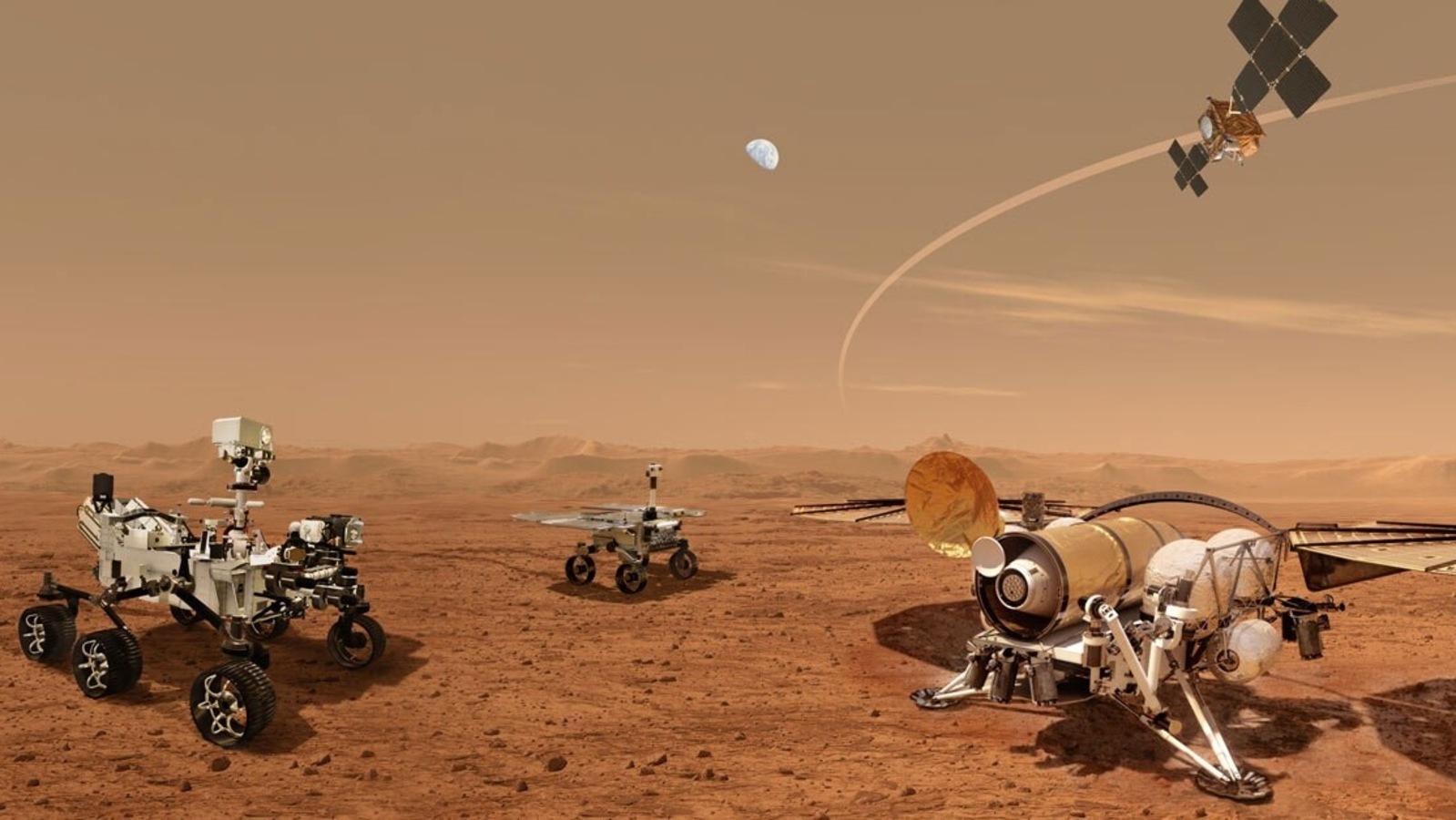Awesome! NASA to do a first on this Mars to Earth mission
NASA says its Mars to Earth mission will be done on the back of this mini rocket within a bigger rocket. Here’s how.
NASA has been maneuvering its Perseverance rover on Mars for more than a year now! The rover is working to explore Mars and collecting pieces from its surface that will help scientists look for the presence of life on the Red Planet. If all goes according to the plan, then the collected pieces of Mars by Perseverance will be the first samples of another planet to be brought back to Earth. However, it will not be possible to do this before 2033. Reason being that, launching and landing a rover on Mars is one thing, but getting the samples back to Earth safely, is quite another. The risks and challenges are daunting, says NASA (National Aeronautics and Space Administration).
To accomplish this challenging task, NASA has awarded a contract to the iconic company Lockheed Martin Space of Littleton, Colorado. It will build the Mars Ascent Vehicle (MAV), a small, lightweight dedicated rocket to bring rock, sediment, and atmospheric samples from the surface of the Red Planet back to Earth. This will be a kind of return journey for the miniature rocket from Mars to Earth while carrying the samples from another planet.
How will Mars Ascent Vehicle complete the whole journey?
Of course, the rocket will be launched from the Earth to Mars before it can take off from there! NASA explained that it will launch the MAV inside a larger spacecraft, which will probably take off around 2028. The miniature rocket will have a section in the top for carrying collected samples in addition to the two engines that will power it up into orbit. As it will be carried to Mars inside a larger spacecraft, NASA’s main focus is to keep the rocket small and light, basically keeping its mass light as much as possible. In length, it will measure around 10 feet tall while weight will be even under half a ton. Calculating how small? It will be shorter than a basketball hoop and will weigh like a grand piano, Popular Science reported while quoting NASA’s MAV project manager Angie Jackman.
NASA shared that the cost-plus-fixed-fee Mars Ascent Vehicle Integrated System (MAVIS) contract has a potential value of $194 million. The performance period for MAV will begin no later than February 25 and will be extended to six years.
Once it reaches Mars, then the lander will navigate to the location and will remain horizontal on the surface until it’s time to bring back the samples. The two-stage rocket will deliver the sample carrying cargo into Mars’ orbit and will employ spin stabilization to keep the miniature rocket straight during the journey. Later, it will be picked up by a European Space Agency ship and brought back to Earth.
For all the latest Technology News Click Here

